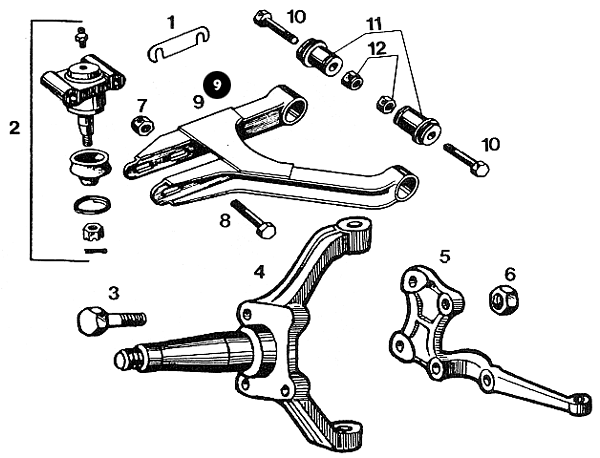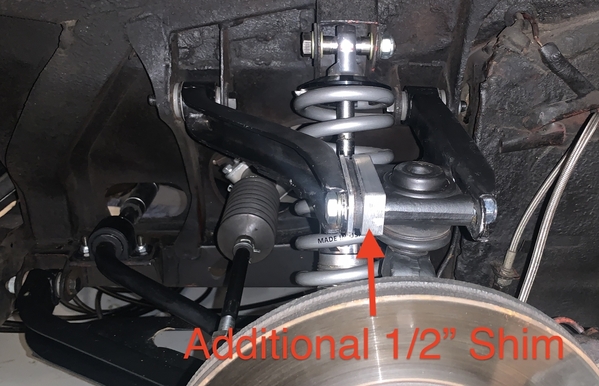A little more about caster. Mostly cut and paste but slightly embellished by me.
"Caster:
The steering axis is angled such that a line drawn through it intersects the road surface slightly ahead of the center of the contact patch of the tire on the pavement by a distance called trail. The purpose of this is to provide a degree of self-centering for the steering—the wheel casters around in order to trail behind the axis of steering. This makes a vehicle easier to control and improves its directional stability (reducing its tendency to wander). Excessive caster angle will make the steering heavier and less responsive, although in racing large caster angles are used for improving camber gain in cornering. Caster angles over 7 degrees with radial tires are common. Power steering is usually necessary to overcome the jacking effect from the high caster angle.
The steering axis does not have to pass through the center of the wheel, so the caster can be set independently of the trail, which is the distance between where the steering axis intersects the ground, in side view, and the point directly below the axle.
Caster angle and trail both influence the steering, albeit in different ways: caster tends to add damping, while trail adds "feel" and returnability (to self-center)."
Take particular note of the last sentence.
I revised my very crude sketch to show the trail (which will vary depending on tire size and other design aspects) to illustrate how that can vary depending on how caster is added. The red car on the right side of the sketch (very simplified) shows some things we experimented with on our race cars. I don't have the drawing here so the dimensions are arbitrary just to illustrate the point. Design "B" worked OK but required lots of arm strength and was overly sensitive to steering inputs. For "C" and "D" I redesigned the front uprights from a forward spindle design to a trailing spindle design. That tamed the beast. The car was no longer overly sensitive to steering inputs and I didn't need to take Advil after the race. I was ready to install power steering before the change. The lap times improved, mostly because the car was much easier to drive.
Mike
![]()




